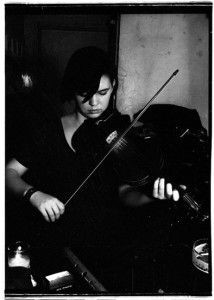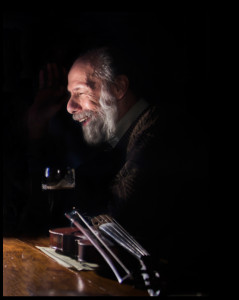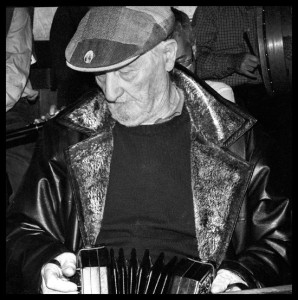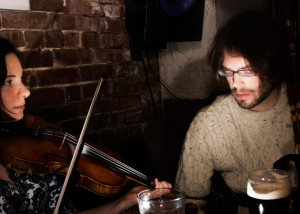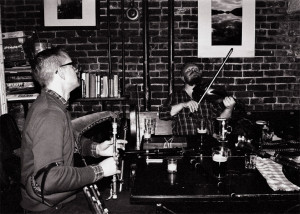Laurence Juber and Martin Guitars at the Metropolitan Museum
At the Met: From Guitarmania to Beatlemania
With Dick Boak and Laurence Juber
The Metropolitan Museum of Art gave a lecture about Martin Guitars, featuring Dick Boak, who has worn many hats at Martin and now is the company’s chief archivist, historian and head of the Martin museum. He was joined by two-time Grammy award winner Laurence Juber, who is among the finest guitarists of this or any era. Juber’s first book, Guitar with Wings, is set for release in May 2014, and features his personal photography from the years he spent as a member of Paul McCartney and Wings.
This presentation was in conjunction with the almost year-long exhibit of early American guitars at the Met, with the great majority of those guitars made by C.F. Martin Sr., who arrived from Saxony in the 1833 to set up business in New York City, before moving shortly thereafter to Nazareth, PA. That is where his great, great, great, grandson runs the family business today.
Jayson Kerr Dobney, Associate Curator in the Met’s Musical Instrument department was the primary organizer of the exhibit, and he opened today’s events with a short slideshow detailing Martin’s background, and explaining how Martin experimented his way to the designs that gave rise to the modern guitar as we know it. This part of the presentation focused on the recent scholarship that resulted in the book Inventing The American Guitar: The Pre-Civil War Innovations of C.F. Martin and His Contemporaries. It is a most impressive work, which will soon be reviewed here.
Boak’s portion of the hour+ event was called “Guitarmania to Beatlemania.” As he ran a slideshow, he provided often humorous commentary and firsthand anecdotes, while Laurence Juber provided musical excerpts on various guitars from the Martin museum, as well as adding many of his own interesting comments and historical references.
After brief history of string instruments, which led to the evolution of the long neck lutes, and eventually the guitar, Boak turned his attention to the history of the Martin Guitar Company.
There was one ukulele present, an instrument Martin made in great numbers during the Hawaiian music craze that swept the nation beginning in 1916. As for vintage guitars, there was a pre-Civil War 2-1/2-20, with translates to size 2-1/2 with a price of $20. In modern times, the “style” number refers to specific aesthetic appointments, with the higher numbers costing the most. Professional level Martins today start at just under $2,000, with many costing much more.
This guitar was strung with gut strings, like a classical guitar, but it had an early version of the now famous X-brace pattern of struts supporting the spruce soundboard, the Martin innovation that revolutionized guitar making and led directly to today’s steel string acoustic guitars.
Next came a 1929 Ditson 111, made by Martin for the Ditson department store, also starting in 1916. Enormous by the standards of the day, the largest Ditson models earned the nickname Dreadnought, after the British battleships. Martin’s D size went on to be the most popular guitar design of all time. In addition, there were modern replicas of two famous guitars, the 000-45 Jimmie Rodgers model, and the D-28 Hank Williams. Rodgers is considered the father of country music, and Williams the heir to that legacy. Juber also had his own Martin artist signature model on hand, the OMC-28B. While each guitar had a soundboard made of one sort of spruce or another, the Ditson 111 had a back and sides made out of mahogany, and the other guitars present were of Brazilian rosewood.
As the presentation went forward, Juber would play short examples, some planned, others were improvised. In fact he was cracking Boak up at times, as some name would be mentioned as the slides went by, say, Jimmie Rodgers, and suddenly there were strains of “He’s in the Jailhouse Now,” or “Mrs. Robinson” for Paul Simon, etc. But Juber also played some early guitar music on the 2-1/2-20 by an Italian Renaissance composer, which he sight-read from a music stand. And then he dropped the guitar into Open G tuning to show how various composers often wrote outside of standard tuning. These included some of the earliest guitar music composed and published in America, along with Franz Gruber’s “Silent Night.” And then he got into more of his own sort of music as the talk shifted to the modern era.
In the middle of it all Boak played a video he put together with footage from recently discovered film shot at the Martin factory in 1939, showing a small staff performing the traditional tasks involved in handmade guitars, still practiced on a much larger scale at the modern factory.
Laurence Juber did play three longer selections during the event. The first was most of Lonnie Johnson’s “6/88 Glide,” which was recorded in 1927 and stands as the earliest guitar solo on record. He pointed out how it has many features and techniques we still associate with rock or blues solos today.
Laurence Juber and Martin guitars – Yesterday and Today
Once the timeline got up to the Beatles, the guitarist choose “I Saw Her Standing There” as his demonstration piece. It is remarkable to watch Mr. Juber in action, as he played the fast-paced bass part running through the entire piece, while also playing the vocal melody and often the vocal harmony parts as well, and the guitar solo when the time comes. The slideshow at that point displayed photos of all the various members of the Beatles playing Martin guitars, with even Ringo having a go at a Martin D-28 while John played drums.
And then the proceedings closed with Juber’s killer version of “Only a Paper Moon,” by Harold Arlen. An earlier rendition of which can be seen on YouTube, HERE.
The previous Wednesday, Laurence Juber gave concert at the Cutting Room, on 32nd Street, in Manhattan.
He was in fine form, and put on one heck of show! Using various guitar tunings, he covered a wide range of material, with originals and many of his most impressive arrangements. And for the encore, out came a cajón, one of those rhythm boxes you sit on and play with your hands. And to play it was none other than Steve Holley, who was the drummer in Wings during the same years that LJ was a member. Holley has been Ian Hunter’s drummer for the past quarter century or so.
They performed the “Rockestra Theme,” which earned each man their first Grammy, as well as Chuck Berry’s “Johnny B. Goode.” Juber pointed out that when they recorded “Rockestra” at Abby Road Studios, they had three drummers, Steve, John Bonham, and Kenny Jones, along with five guitarists, four bass players, etc. So this was the “acoustic version.” And it was indeed a treat to see him render the general feel of the mass orchestration on one small Martin guitar, with help from the rattle and thump of the cajón.
As Steve Holley put it, Juber “just keeps getting better and better.” And I would have to agree. I am sorry he didn’t get to play more at the Met today, as the crowd was clearly wowed by what they witnessed.
And he will be wowing audiences all over the place in the coming weeks, including California, Ohio, Kentucky, Pennsylvania, Virgina. A full schedule is available at this website.
http://www.laurencejuber.com/concerts.html
And that is one man’s word on …
Laurence Juber & Martin Guitars at the Met
Learn more about Martin Guitars HERE
Related Articles:

